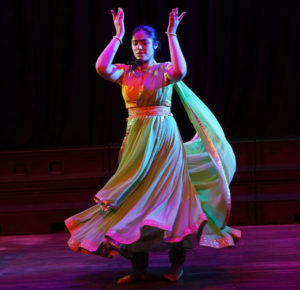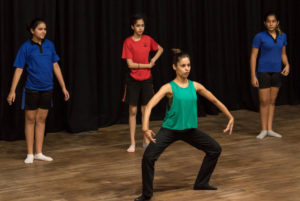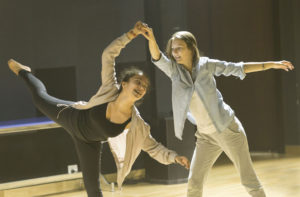Sometimes during a lesson, students would ask, perplexed, ‘…but Miss, when will we dance?’
Coming to a teacher who has spent her whole life in dance, it was a bit surprising the first time I encountered the question. But it made me think about how ‘dance’ is perceived universally. Is it a series of stylised movements, performed in coordination with a given theme accompanied by music? Is it the ability to move the body proficiently in accordance with some rules? Is it simply the capacity of any person to express themselves freely through movement, or is it all the above?

I recently completed an introductory online programme titled ‘Therapeutic Dance in Education’ (TDIE), hosted by the Creative Movement Therapy Association of India (CMTAI). It is a pedagogy of dance that borrows from the principles of Dance Therapy and Contemporary Dance. The course provided insight into the methods dance practitioners employ as teachers, and their pedagogical influences to teach dance. It confirmed a thought that has been a concern for me throughout my years of being both a dance practitioner as well as a dance educator, which I will come to a little later.

Dance as an art form inherently holds within itself the ability to make us feel better. It has the potential to foster an individual’s holistic wellbeing, by supporting their emotional, physical, psycho-social, and intellectual growth. When we dance, we not only move kinaesthetically, improving our physical well-being but are also able to use the body to express our innermost feelings, emotions, thoughts, and ideas, which may otherwise be hard to express. For this reason, it is said DIE concerns itself with questions such as why we teach dance to children, what we teach, how, when, where, and to whom we teach. It is a process-oriented approach that can be developed step by step in accordance with the needs of students. It advocates the importance of creating a safe space where creativity is welcome and there is no wrong movement. The movement exercises in TDIE are exploratory in nature and fall within the scope of creative movement. The focus of activities is the natural way a body moves rather than a specialised and stylised form of movement, it encompasses personalised movement experiences. It includes self-expression of a person’s inner landscape, of one’s inner thoughts and feelings.

Some core ideas and principles include:
- Movement is an intrinsic part of being human and is inherent in all of us
- Movement helps us find and make connections with our bodies and ourselves, as well as with others around us
- Movement is eclectic- there is no right or wrong way to move and there is acceptance of every person’s own individual style
The above approach to teaching dance falls within what can be called ‘Dance-in-Education’ and distinguishes itself from ‘Dance Education’, where the focus can be more on teaching a specific style or form of dance. Thus, the basic difference between the two, as laid out in the course is that while the latter focuses on teaching dance for the sake of dance itself, as a stylised form; the former seeks to support the overall, comprehensive development of a child.
At the beginning of this article, I alluded to a thought that has been a concern for me, for years, as a dance educator. Over the years I learned that my reasons for teaching dance are guided more by the need to use this infinite potential of dance to contribute to the well-being of a person, than as a teacher of a particular dance form.
Resources:
Presentation shared by faculty – Ms. Preethi Rajagopalan in the online training program ‘Therapeutic Dance in Education’.
Other instructors included founders of CMTAI Ms. Tripura Kashyap and Ms. Reetu Jain along with Ms. Sukriti Dua and Ms. Aparna Ramkrishnan.

